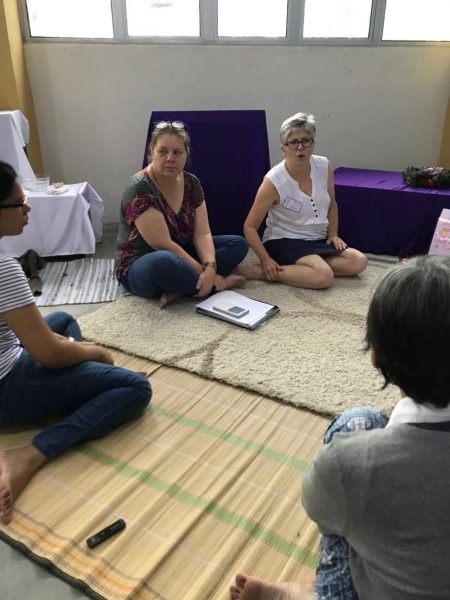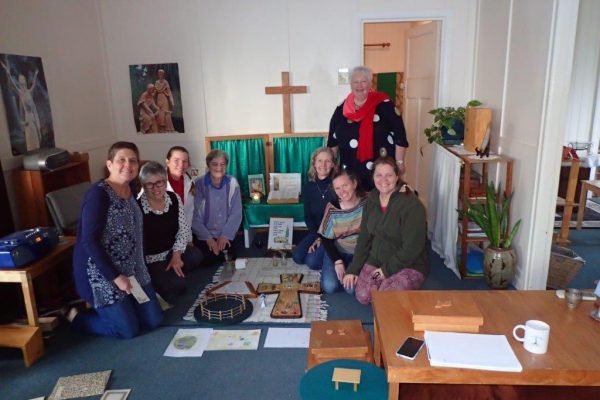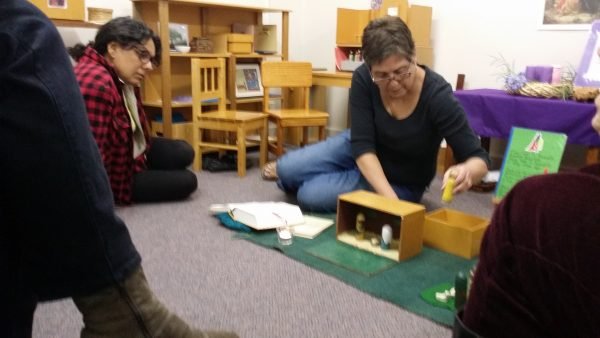Sending people out two by two for formation.
Often when people want to be formed as catechists in The Catechesis of the Good Shepherd, they make arrangements with a formation leader to come and give the formation. This involves some organisation and some cost. So why does The Catechesis of the Good Shepherd recommend that two formation leaders give formation? Doesn’t that make it harder and more expensive?
First of all, anything that we have to invest time and money into will be valued higher than something given for free. There is something in our human nature that values something that costs us over that which is given to us. The Catechesis of the Good Shepherd is like a Precious Pearl (Matthew 13:46) which a merchant searched for his whole life until he finally found it, then he sold everything he had to buy that pearl. Sometimes it may be more like a Hidden Treasure (Matthew 13:44) which we discover by accident in a field, then sell all to buy it. Whether we are searching for it or just come across it we find it is a treasure worth paying for.

Having two people give formation is a blessing both for the new catechists and for the formation leader. For the catechists, it allows them to see two different styles of presenting which helps to break the “script” idea that some tend to have when first beginning in The Catechesis of the Good Shepherd. There is a richness is being able to experience different approaches and styles and seeing the individuality of each Catechist as part of the gift (perhaps part of the wrapping) without changing the essential elements.

Two people presenting and reflecting, is also a way of overcoming listeners fatigue. Hearing a change in voice or having opportunities to divide up the reflections and promote discussion is also a catalyst for all participants to share their thoughts and discuss the work. Two people bring two sets of skills to offer. For example, one may be better at materials making, another may suit the pastoral needs of individuals better, etc. Two people also help to keep the formation from going off on a tangent or spending too much time in a discussion.

Jesus when he sent out his apostles to share the good news, sent them out in pairs (Mark 6:7, Luke 10:1). I wonder why that would be? Would it not be easier for people to host just one apostle? Would they be able to cover twice as much ground if they went alone? So why would he choose that model? Perhaps the answer is also given by Jesus when he says, “Where two or three are gathered in my name, there am I in their midst” (Matthew 18:20). Perhaps the answer lies in the need to have a second witness to enable people to see the word as truth.
I see the gift of having someone else on the team as someone to support me when I cannot find the words to answer a question, or when I need an experience to illustrate a point, but the memory does not come to mind. Sometimes people have questions or challenge the method and having someone there with you to problem solve helps. Sharing the load also makes the formation leaders more available to the participants and better meet the needs of the group. Each evening there is time to reflect together and choose the direction of the coming day, so that the formation is individualised to the needs of that particular group of catechists.

But I can see that there is something else that having two formation leaders gives. It brings the presence of the love of Jesus. Two people can model in their relationship the love of Jesus and the gift of friendship which is a charism of this work of The Catechesis of the Good Shepherd.